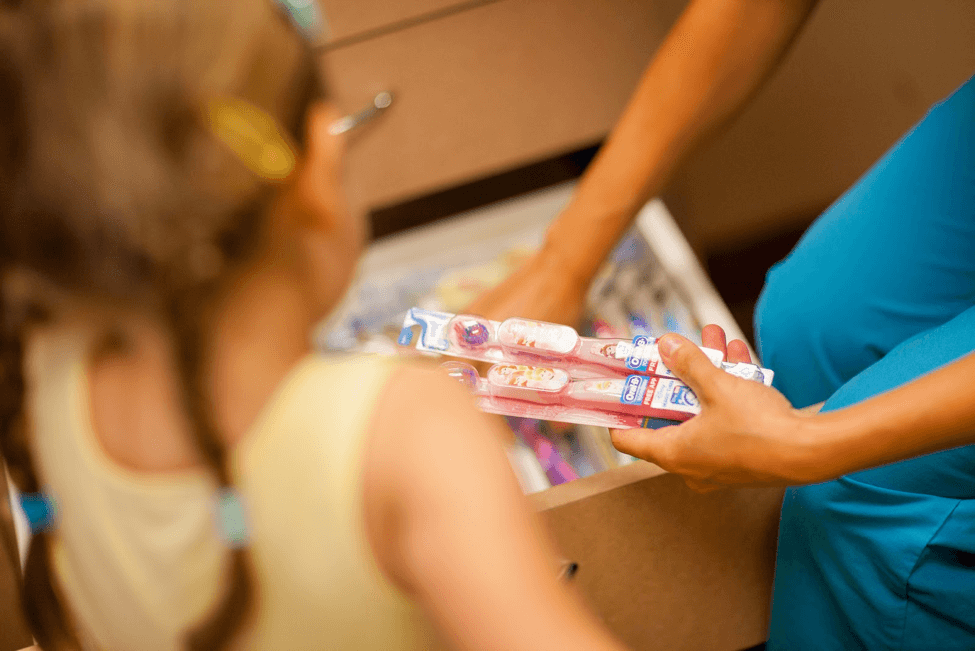It’s pretty exciting when you hear your child yell, “My tooth is loose!” They may be excited, nervous, or scared it’ll hurt, but it’s a natural part of growing up. Baby teeth have to fall out in order to make way for new, adult teeth. It’s important for children to not only know what to expect when their baby teeth start falling out but to also take good care of the adult teeth that come in next.
A child has 20 baby teeth, which often come in by age three. They usually fall out in the same order they came in, meaning that the lower center teeth are usually the first to go, around age six or seven. The top center pair is next.
A baby tooth typically doesn’t loosen until the permanent tooth below pushes it up to take its place, but it is possible for kids to lose a baby tooth before the permanent tooth is ready to erupt, which can cause adult teeth to shift out of place before emerging. In this case, a pediatric dentist might put a custom-fit plastic placeholder, or spacer, in until the adult tooth is ready to emerge. This prevents future spacing problems.
Some children lose their first tooth as early as age four or as late as seven. Generally, the younger the child was when the teeth came in, the earlier they fall out. If your child begins to lose teeth before 4, consult a dentist to make sure there’s no underlying problem.
It’s also possible for a child to reach age seven or eight without losing any baby teeth. This isn’t necessarily a problem, but you can always see a pediatric dentist to be sure.
If your six or seven-year-old complains of soreness in the back of his mouth, it’s probably the first permanent molars coming in. There are no baby teeth there that fall out first.
Once the new teeth start coming in, you’ll notice that they are bigger than the baby teeth. Adult teeth also tend to be less white than baby teeth and have pronounced ridges because they haven’t been used yet for biting and chewing.
Brushing your teeth is more important now than ever! You’ll probably need to supervise until your child is around eight, and make sure they are brushing thoroughly and regularly. Fluoride toothpaste is highly recommended along with flossing.
It’s best to replace toothbrushes every three or four months to reduce harmful bacteria and keep them working their best. It may be even sooner than that if the bristles are frayed. It is also important to make sure your child sees a dentist twice a year.
If you’re near the Roscoe Village, Lakeview or Northside areas of Chicago, visit our website or call us today to make an appointment! We work with kids of all different comfort levels and offer many accommodations, including sedation dentistry. Let us know if you have any concerns. We would love to meet you and your child and provide them with the best treatment possible.

